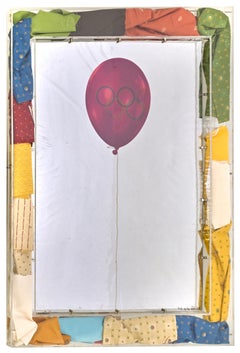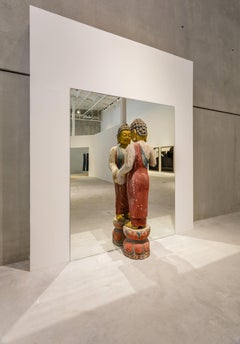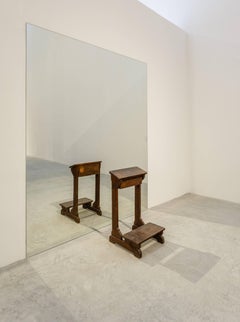Pistoletto Mirror
1980s Arte Povera Figurative Prints
Screen
Recent Sales
Stainless Steel
Mirror, Wood
Iron
Mirror, Wood
1980s Interior Prints
Mirror, Screen
1960s Still-life Prints
Mirror, Screen
Early 2000s Mixed Media
Mirror, Plexiglass, Acrylic
1980s Arte Povera Figurative Prints
Screen
Late 20th Century More Art
Screen
Michelangelo Pistoletto for sale on 1stDibs
Michelangelo Pistoletto is an Italian painter, action and object artist, and art theorist born in Biella, in 1933. He is now one of the great exponents of Italian and indeed international contemporary art with over sixty years of experience. From a young age Pistoletto worked in his father’s restoration workshop but in the 50s, he began painting figurative works and self-portraits. In 1959, he participated in the Biennale di San Marino and one year later he hosted his first solo-exhibition at the Galleria Galatea in Turin. In the 60s, Pistoletto combined painting with photography using collage techniques on reflective backgrounds and eventually moved to printing photorealistic scenes on steel plates polished to a high finish which he achieved using the screen-printing method which allowed the observer to almost completely melt into what was depicted. In the mid-60s, Pistoletto gained international audience thanks to gallery owner Ileana Sonnabend, and began exhibiting his work in the USA, where he had his first solo-exhibit at the Walker Art Center in Minneapolis. In 1967, he was awarded first prize at the São Paulo Art Biennial but later that year he began focusing on performance, video-art and theatre which led him to found the action art group called Zoo Group. Pistoletto also began painting on mirrors early in his career, attempting to connect painting with the constantly changing realities in which the work finds itself. As he explored this form, he began bringing together rags with casts of the omnipresent classical statuary of Italy to break down the hierarchies of art and common objects. The use of impoverished materials as a form of art is a clear indication of Pistoletto’s approach to the Arte Povera. Although being influenced by the American post-pop art and photorealism, Pistoletto was soon listed by gallery owners and critics as a significant representative of the mostly Italian trend of the Arte Povera. The aim of his work was always to display the unity of art and everyday life.


